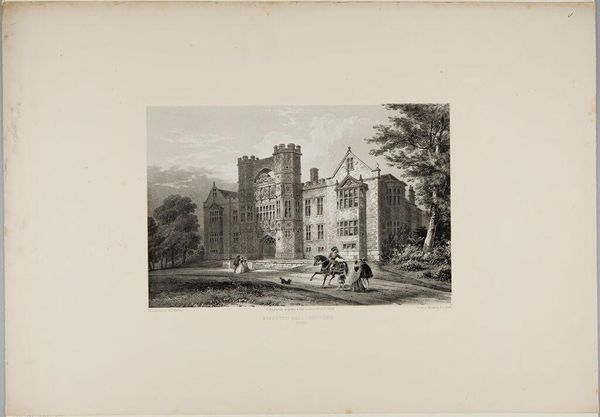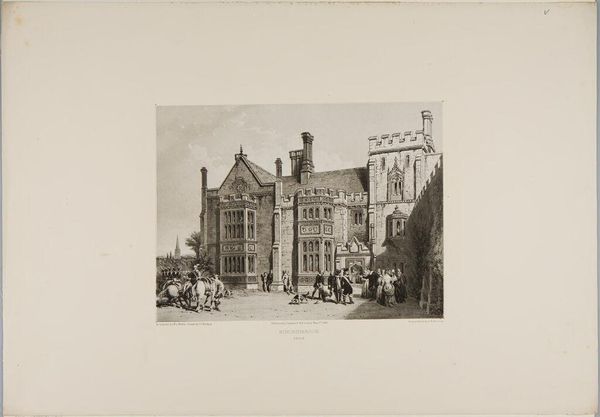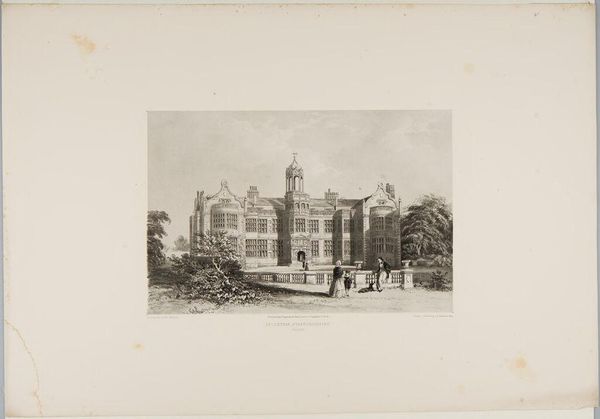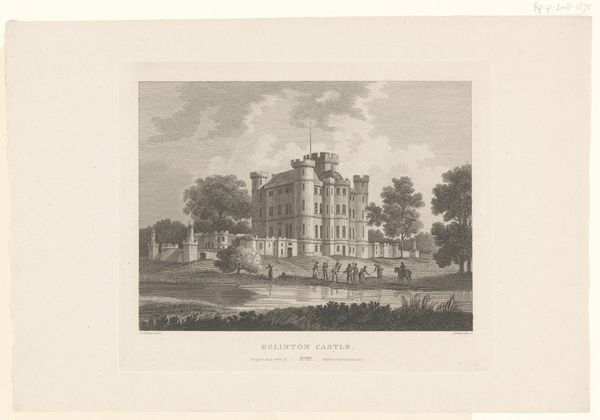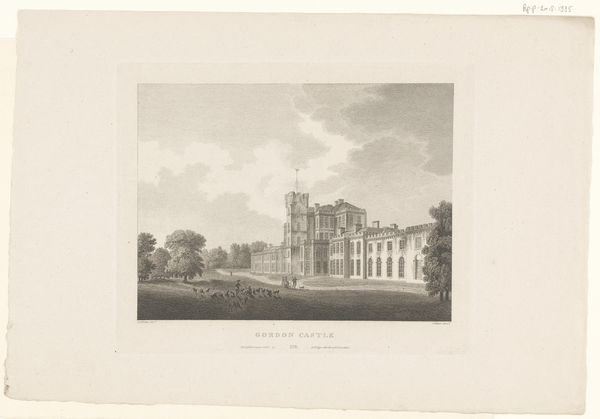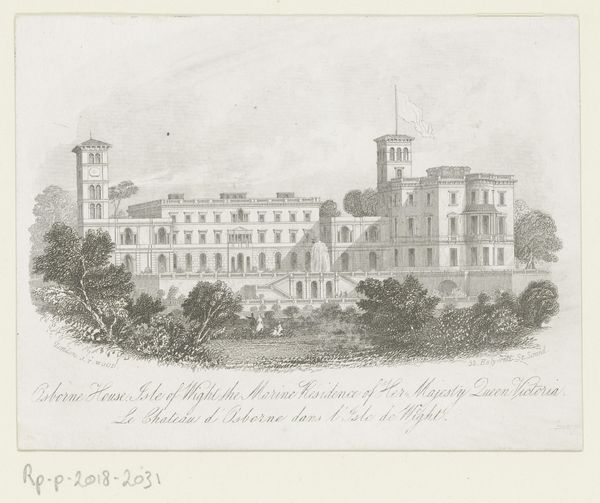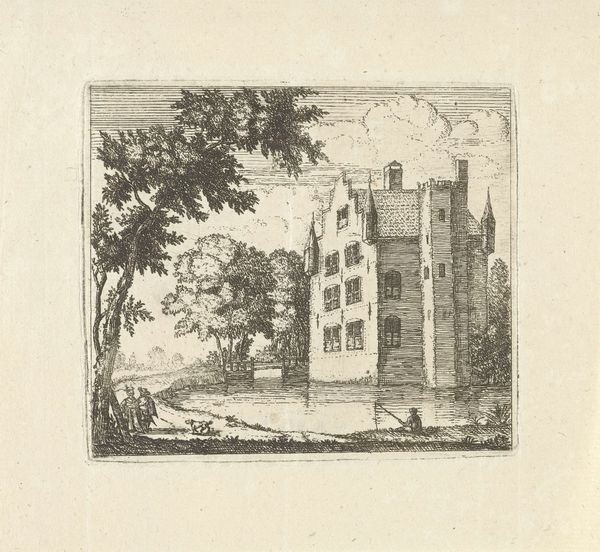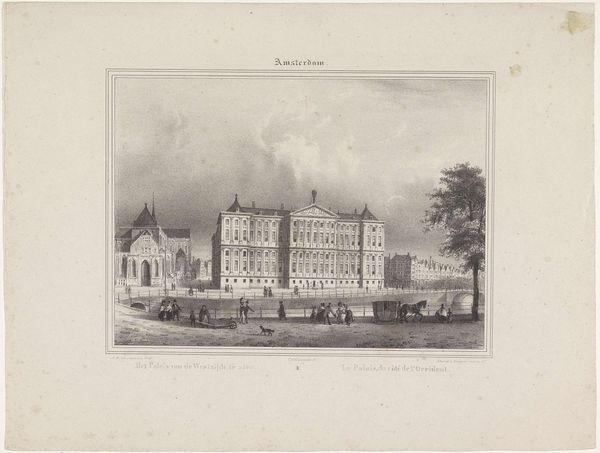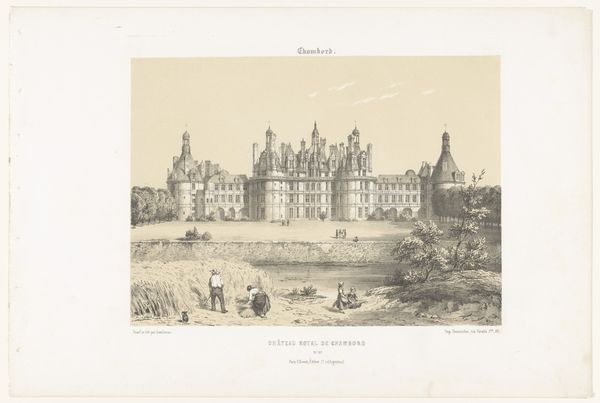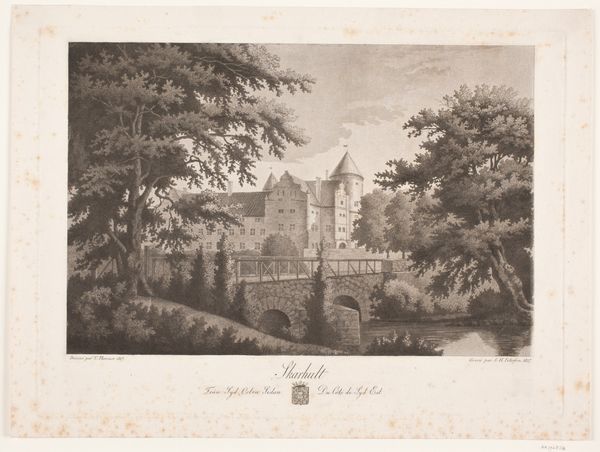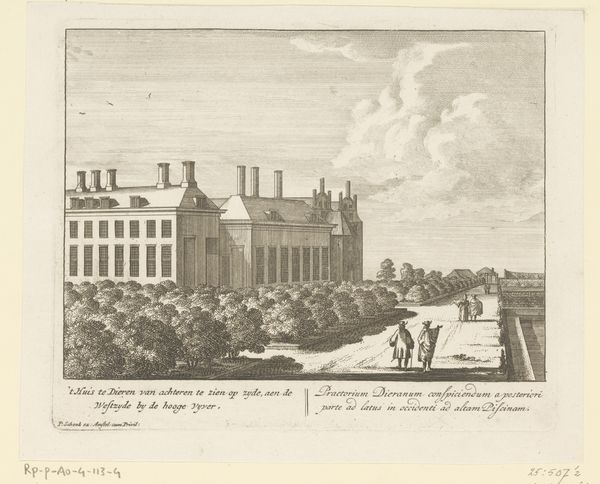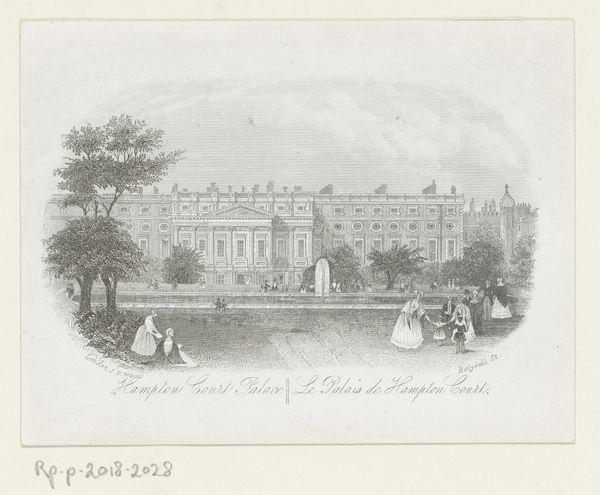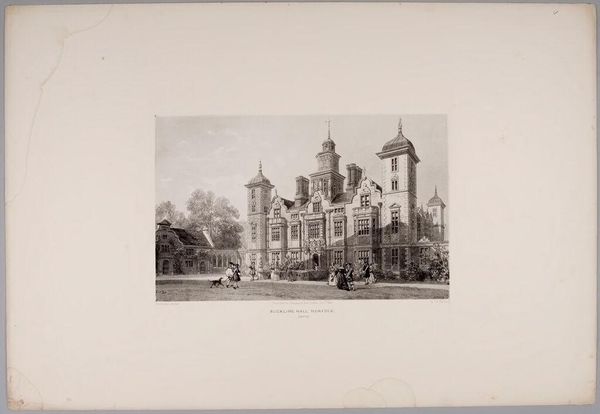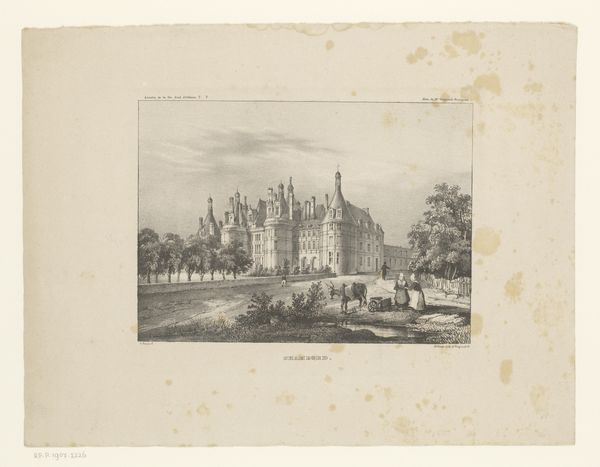
Charlton House, Kent c. 19th century
Copyright: CC0 1.0
Curator: W.L. Walton's "Charlton House, Kent" presents a stately manor nestled amidst lush greenery. The figures on the lawn almost seem to be socialising. Editor: It evokes a palpable sense of established power, doesn't it? The composition, with the building's central positioning, feels deliberate in its assertion of dominance. Curator: Indeed. The very image of the manor, with its symmetrical facade and imposing presence, became a symbol of social stratification and aristocratic privilege. The figures become signifiers of those hierarchies, their roles intrinsically linked to the space. Editor: The symmetrical architecture also reflects stability, order, and possibly the owners' aspirations for permanence and legacy. The twin towers almost seem to mimic human forms, guarding the grounds and its occupants. Curator: It's a fascinating insight into how architectural design reflects and reinforces the societal structures of its time. Thank you for sharing your perspective! Editor: The pleasure was all mine, particularly considering how the building itself becomes a symbol, a kind of enduring cultural artifact.
Comments
No comments
Be the first to comment and join the conversation on the ultimate creative platform.
